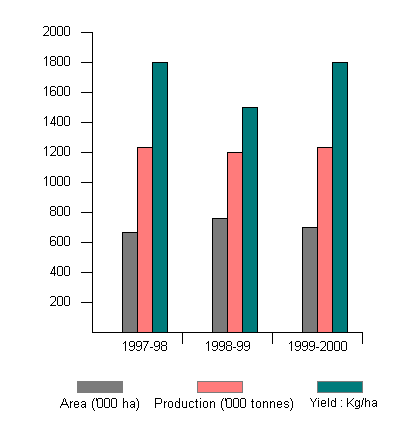| Sl | State | Small Grain | | 1. | Uttar Pradesh | Adamchini, Badshah Pasand, Bindli, Bhartaphool, Dhania, Chhoti Chinnawar, Laungchoor, Jeerabattis, Kanak Jeeri, Yuvraj, Moongpholi, Rambhog, Ramjawain, Sakkarchini, Tinsukhia, Bengal Juhi, Thakur Bhog | | 2. | Haryana | - | | 3. | Punjab | - | | 4. | Himachal Pradesh | - | | 5. | Rajasthan | - | | 6. | Jammu & Kashmir | - | | 7. | Mizoram | - | | 8. | Madhya Pradesh | Chinore, Dubrej, Kalimooch, Bishnubhog, Badshah Bhog, Tulsi-Manjari | | 9. | Bihar | Badshah Bhog, Deobhog, Karia Kamod, Katarni, Tulsi-Manjari, Shyam, Jeevan, Kanak Jeera, Kanak Jeeri, Badshah Pasand, Mircha, Bramobhusi, Ranijawain, Karina, Tulsi Pasand, Dewatabhog, Chenaur, Sonalari, Sataria, | | Sl | State | Medium Grain | | 1. | Uttar Pradesh | Karmuhi, Kesar, Kesarparsom, Sonachur, Tilakchandan, Kalanamak, Vishnu Bhog | | 2. | Haryana | - | | 3. | Punjab | - | | 4. | Himachal Pradesh | Achhu, Begrui, Panarsa (local) | | 5. | Rajasthan | - | | 6. | Jammu & Kashmir | - | | 7. | Mizoram | - | | 8. | Madhya Pradesh | Chatri, Modhuri, Vishnu Parag | | 9. | Bihar | Gopal Bhog, Champaran Basmati (Lal), Champaran Basmati (Kali), Champaran Basmati (Bhini), Bhilahi Basmati, Amod, Abdul, Baharni, Kalanamak, Kesar, Sonachur | | Sl | State | Long Grain | | 1. | Uttar Pradesh | Basmati-370, Dehradoon Basmati, Lalmati, Type-3, Hansraj, Nagina-12, Safeda, Kalasukhdas, Tapovan Basmati, Type-9, Duniapat Dabraj, Ranjavain (T-1) Kasturi, Pusa Basmati-1, Taraori Basmati. | | 2. | Haryana | Haryana Basmati-1, Taraori Basmati, Basmati-370, Khalsa-7, Karnal Local, Pakistani Basmati. | | 3. | Punjab | Basmati-370, Pusa Basmati-1, Pakistani Basmati, Basmati-385. | | 4. | Himachal Pradesh | Baldhar Basmati, Madhumati, Mushkan, Seond Basmati. | | 5. | Rajasthan | Kasturi, Pusa Basmati-1, Basmati-370, Basmati (local). | | 6. | Jammu & Kashmir | Basmati-370, Ranvir Basmati. | | 7. | Mizoram | Pusa Basmati-1 | | 8. | Madhya Pradesh | Laloo. | | 9. | Bihar | Baikani | | | | |
|
